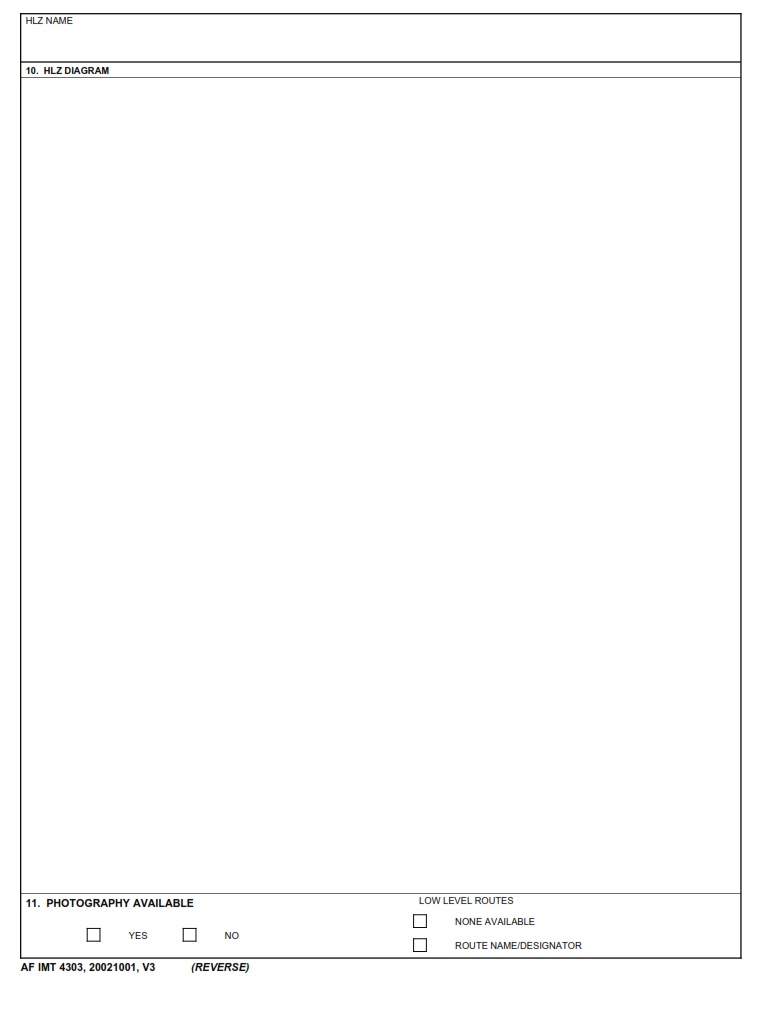AF-FORMS.COM – AF Form 4304 – Drop Zone Landing Zone Control Log – As the deafening roar of the helicopter fills the air and the wind rushes past your face, you brace yourself for impact. The adrenaline courses through your veins as you prepare to touch down in an unknown drop zone. But have you ever wondered what happens behind the scenes to ensure a safe landing? Enter AF Form 4304 – Drop Zone Landing Zone Control Log. This seemingly mundane document is actually the key to maintaining order and safety during military airborne operations. In this article, we will unravel the secrets hidden within this log and shed light on its vital role in ensuring successful missions.
Imagine being responsible for controlling hundreds of parachuters descending from above, each with precision timing that could mean life or death. The pressure is intense, but luckily there’s a hero at every drop zone – AF Form 4304 – Drop Zone Landing Zone Control Log. This unsung hero may seem like just another form in military bureaucracy, but it holds immense power when it comes to managing aerial operations and preventing chaos from ensueing during parachute drops. In this article, we will explore how this log plays a pivotal role in maintaining control and safety during high-stakes airborne maneuvers.
Download AF Form 4304 – Drop Zone Landing Zone Control Log
| Form Number | AF Form 4304 |
| Form Title | Drop Zone Landing Zone Control Log |
| Edition Date | 9/3/2002 |
| File Size | 37 KB |
AF-Form-4304-Drop-Zone-Landing-Zone-Control-Log.pdf (22 downloads )
What is an AF Form 4304?
The AF Form 4304 is a crucial document in the realm of aviation operations, specifically when it comes to drop zones and landing zones. It serves as an essential tool for recording and managing control over these areas during training exercises or actual deployments. This log enables personnel to maintain a clear overview of all activities taking place within the airspace, ensuring safety, coordination, and efficiency.
One of the primary purposes of the AF Form 4304 is to help minimize risks associated with the simultaneous use of drop zones and landing zones. Providing a centralized record of activities conducted within these areas, it helps prevent any potential conflicts or accidents that may arise from overlapping operations. The form captures vital details such as date and time, types of assets being dropped or landed, responsible units involved, equipment used, aircraft information, weather conditions – essentially everything needed for proper tracking and coordination.
Moreover, this log plays a significant role in post-event analysis and evaluation. By documenting every action taken during training exercises or deployments on an AF Form 4304, military authorities can conduct thorough reviews to identify ways to improve future operations significantly. These comprehensive records provide invaluable insights into what went right or wrong during specific events – enabling strategic planning for enhanced performance in subsequent exercises or missions.
Where Can I Find an AF Form 4304?
When it comes to finding an AF Form 4304, the process might seem daunting at first. However, with advances in technology, locating this essential document has become easier than ever before. One of the best places to start your search is online. The Air Force e-publishing website is a comprehensive resource that houses all official Air Force forms, including the AF Form 4304. By visiting this site and performing a simple search, you can quickly access and download the form in PDF format.
Additionally, another valuable resource for obtaining an AF Form 4304 is your local base office or unit support section. These offices are equipped with knowledgeable personnel who can guide you through the process and provide physical copies of forms if needed. They can also offer assistance in properly completing the form or clarify any questions you may have regarding its purpose or specific guidelines.
Remember that having access to accurate and up-to-date forms is crucial when it comes to landing zone control logs and other essential documentation within the Air Force. So whether you choose to look online or seek assistance from your local base office, rest assured that finding an AF Form 4304 won’t be an uphill battle – armed with these resources at your disposal, being properly prepared for drop zones and landing zones will be a breeze!
AF Form 4304 – Drop Zone Landing Zone Control Log
The Drop Zone Landing Zone Control Log is an essential document in military operations, specifically in managing and monitoring the movement of personnel and equipment during a parachute or air assault operation. This log acts as a centralized record that captures crucial details such as the date, time, aircraft types, unique identifiers of personnel involved, equipment load description, location codes for drop zones and landing zones (DZs/LZs), and any other relevant information pertaining to the operation. It serves as an indispensable tool for commanders, mission planners, safety officers, and ground crew members alike.
With its comprehensive nature and meticulous tracking capabilities, the AF Form 4304 allows for effective coordination between various units involved in airborne operations. By systematically recording data on personnel jumps at specific DZs/LZs alongside associated loads dropped or delivered from each aircraft type utilized within a mission-set timeframe, this log significantly enhances situational awareness on the battlefield. Ultimately, this level of transparency helps leadership evaluate mission effectiveness accurately while ensuring overall operational success.
Moreover, beyond its immediate purpose during military missions themselves – from routine training exercises to complex combat deployments – this control log has proven valuable beyond initial expectations. Its well-organized records have often been referenced later for analysis and evaluation purposes by specialists in different fields or used to identify patterns or trends when developing new tactics or strategies. The accuracy provided by the AF Form 4304 can also be crucial when investigating incidents or accidents that occur during parachute operations or air assaults.

